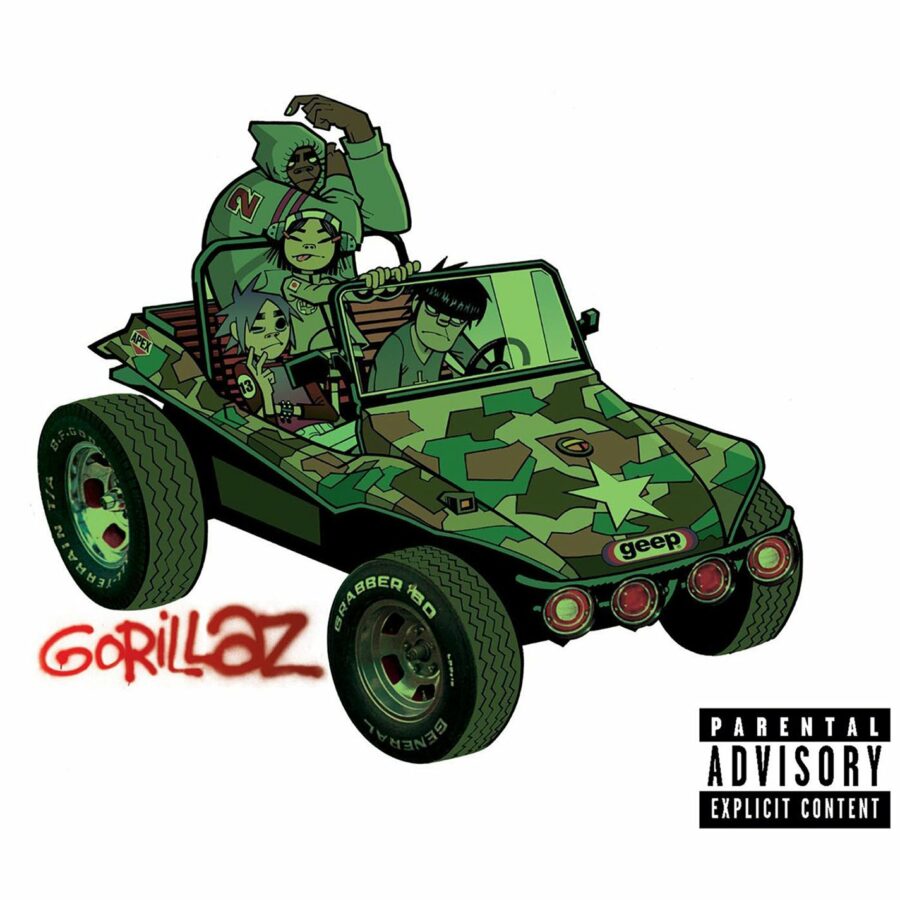Gorillaz may be an animated band, but the world they live in is not entirely apart from our own. Virtual rockers 2D, Murdoc, Noodle, and Russel visit the same cities, put up with the same politicians, and admire the same musicians as we do—and they watch the same movies, too.
In interviews and promo videos, 2D paints himself as the film aficionado of the group. His love for cinema shines through in the band’s catalogue. Some of Gorillaz’ songs allude to horror flicks, which the blue-haired frontman holds especially dear; others nod toward films that tackle real-world terrors such as war and government corruption.
Without further ado, here’s a guide to the media preferences of everyone’s favorite toon troubadours.
Dawn of the Dead (1973)
Damon Albarn is clearly a major fan of George A. Romero. Gorillaz’ catalogue features not one, not two, not three, but four references to the iconic director’s Night of the Living Dead series.
If you’re a horror fan, the instrumentals in the intro to Demon Days might sound familiar. The haunting bass clarinet line is lifted from “Dank Earth” by Don Harper, which appears on the soundtrack of the 1973 zombie film Dawn of the Dead.
“Clint Eastwood,” a single from Gorillaz’ self-titled debut, also pays homage to the classic film. The song’s music video begins with red text, written first in Japanese and then in English, against a black screen: “Every dead body that is not exterminated, gets up and kills. The people it kills, get up and kill.” These words are spoken during a newscast in one of Dawn of the Dead’s earliest scenes. “Hip Albatross,” a Gorillaz B-side, actually features a sample of the line.
Day of the Dead (1985)
Gorillaz makes reference to Day of the Dead, Dawn of the Dead’s 1985 sequel, as well. During the film’s opening sequence, a man shouts into a megaphone—“Hello! Is anyone there”—while wandering through a zombie-ravaged Fort Myers, Florida. As he searches frantically for survivors, a guitar and percussion vamp builds up suspense. Gorillaz sample this audio in the beginning of their track “M1A1.”
Friday the 13th and The Shining
In the video for Gorillaz track “19-2000,” the animated band members go for a wild ride down the highway. As they zoom around all manner of larger-than-life obstacles, they pass by signs reading “Camp Crystal – 10 miles” and “Overlook Hotel – 149 miles.” These signs are references to Camp Crystal Lake, terrorized by Jason Vorhees in Sean S. Cunningham’s seminal 1980 slasher Friday the 13th, and the hotel occupied by Jack and Wendy Torrance (and a host of ghosts) in Stanley Kubrick’s 1980 epic The Shining.
Advertisement
Cannibal Holocaust and The Birds
“DARE” is one of Gorillaz’ more lighthearted bops, but its music video makes reference to some grisly films. The crows circling Kong Studios in the opening allude to the titular menaces in Alfred Hitchcock’s 1963 thriller The Birds. The newspaper Russel is shown reading on the toilet reads Cannibal Massakren—the Danish name for controversial 1980 film Cannibal Holocaust, directed by Ruggero Deodato.
The Good, the Bad, and the Ugly
Fans might wonder why Gorillaz’ breakout hit is called “Clint Eastwood” when the song never mentions the actor by name. The answer lies in the single’s allusions to one of his most famous films, the 1966 Western The Good, the Bad and the Ugly. The music video opens with a scream resembling the yell that can be heard throughout The Good, the Bad and the Ugly’s theme (famously composed by Ennio Morricone). Albarn’s melodica motif faintly echoes Morricone’s melody.
Dirty Harry
“Dirty Harry,” a track from Demon Days, grapples with the violence of the Iraq War. The title calls back to the 1971 Don Siegel film of the same name, in which Clint Eastwood plays a vigilante police officer—perhaps commenting on the way the U.S. tends to see itself in times of international conflict.
Full Metal Jacket
The single artwork for “Dirty Harry” features an illustration of a military helmet with the song’s title written on it, beside a sticker depicting a raised cartoon fist. This is a visual allusion to the helmet on the poster for Stanley Kubrick’s 1987 war drama “Full Metal Jacket,” which boasts the inscription “Born to Kill” next to a peace sign decal.
Advertisement
Animal Farm (1954)
In 2017, Gorillaz made a comeback with the release of “Hallelujah Money”—the first single off Humanz, which reckons with the American cultural climate during the 2016 election season. The music video to the song depicts featured artist Benjamin Clementine in front of a greenscreen. As he sings, visuals from several videos—including footage from the 1954 animated film Animal Farm, directed by John Halas and Joy Batchelor and commissioned by the American CIA to strengthen Red Scare sentiments—flash past.
Village of the Damned (1960)
Another film alluded to in the “Hallelujah Money” video is Village of the Damned. The 1960 sci-fi flick, directed by Wolf Rilla, depicts a group of aliens infiltrating a small town by posing as schoolchildren. A shot of these “children”—uncanny, still, and similar-looking—appears behind Clementine as he laments the fall of society.
BONUS: Tank Girl
Before working on Gorillaz, artist Jamie Hewlett illustrated the Tank Girl graphic novels. As of writing, Gorillaz has never made a musical reference to the series—but according to an interview with Hewlett, the characters all exist in the same universe. (Pictorial proof: a piece by Hewlett shows Murdoc posing with Tank Girl herself, his green elbow propped on her shoulder.) A live-action Tank Girl adaptation was directed by Rachel Talalay in 1995.
Advertisement
Advertisement
